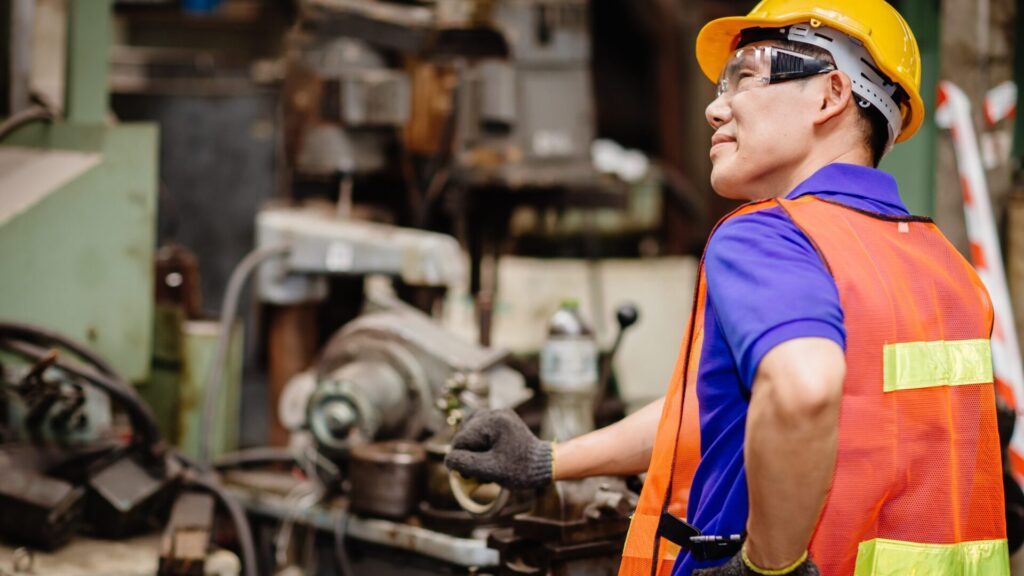Prolonged standing is required in various occupations and can lead to discomfort and fatigue in the feet, legs, and lower back. Regular exposure to prolonged standing has been associated with an increased risk of musculoskeletal disorders (MSDs) as well as other issues like varicose veins and locked joints. Researchers have investigated multiple means of intervention such as anti-fatigue mats and shoe insoles to alleviate the associated risks and discomfort to the operators.
Anti-fatigue mats are commonly used when operators are exposed to prolonged standing on hard concrete floors. In a majority of studies, it has been found that anti-fatigue mats are associated with significantly lower discomfort ratings when compared to concrete floors. Most of these studies were conducted over a 4- to 8-hour period and participants were required to complete a questionnaire about perceived fatigue and discomfort.
It is important to consider the following factors while investigating anti-fatigue matting:
- Mats should be firm enough to minimize the “bottoming out effect.” This effect causes the mat to deform while under heavy weights, eliminating the positive effects.
- Mats that are too soft can have adverse effects resulting in increased lower extremity fatigue.
- Ensure mats have beveled edges to minimize trip hazards.
- Place mats at least 8″ under a workstation to prevent uneven standing surfaces.
- Avoid slippery surfaces when handling grease, oil etc.
- Ensure mat thickness is ≥ 0.5″.
- Utilize interlocking edges to securely join adjacent pieces.
Anti-fatigue insoles are another commonly used intervention to reduce lower extremity discomfort and fatigue. Anti-fatigue insoles fit directly into the operators’ shoes and use a spring-like technology to absorb and return energy for an even force distribution. Insoles are often utilized when anti-fatigue mats are not conducive to the work environment, such as in clean rooms or high foot traffic operations. Previous studies have concluded that the anti-fatigue insoles significantly reduce general fatigue and lower extremity discomfort when compared to hard concrete flooring. It is important to consider the following factors while investigating anti-fatigue insoles:
- Insoles should be made of a viscoelastic material.
- Insoles should be properly fit for each individual.
- Insoles can increase shoe tightness, resulting in adverse effects.
In addition, many studies have suggested that the use of anti-fatigue mats and shoe insoles are not mutually exclusive. Research revealed that subjects generally experienced less discomfort with the combination of insoles and anti-fatigue matting. Particularly, older subjects expressed positive influences in reducing both leg and general fatigue and discomfort in the feet, ankles, legs and lower back.
So what’s the bottom line? Research has confirmed that the use of anti-fatigue matting, insoles, or a combination can be beneficial in reducing fatigue and discomfort from prolonged standing.
References:
“Anti-fatigue Insoles.” SmartCells Cushioning Technology. SmartCells USA, n.d. Web. 16 Aug. 2016. http://www.smartcellsusa.com/products/insole/
King, Phyllis M. “A Comparison of the Effects of Floor Mats and Shoe In-soles on Standing Fatigue.” Applied Ergonomics 33.5 (2002): 477-84. Web. 12 Aug. 2016.
Orlando, Antonina R., and Phyllis M. King. “Relationship of Demographic Variables on Perception of Fatigue and Discomfort Following Prolonged Standing under Various Flooring Conditions.” Journal of Occupational Rehabilitation J Occup Rehabil 14.1 (2004): 63-76. Web. 15 Aug. 2016.
Redfern, Mark S., and Rakié Cham. “The Influence of Flooring on Standing Comfort and Fatigue.” AIHAJ – American Industrial Hygiene Association61.5 (2000): 700-08. Web. 15 Aug. 2016.
Waters, Thomas R., and Robert B. Dick. “Evidence of Health Risks Associated with Prolonged Standing at Work and Intervention Effectiveness.” Rehabilitation Nursing Rehabil Nurs 40.3 (2014): 148-65. Web. 15 Aug 2016
